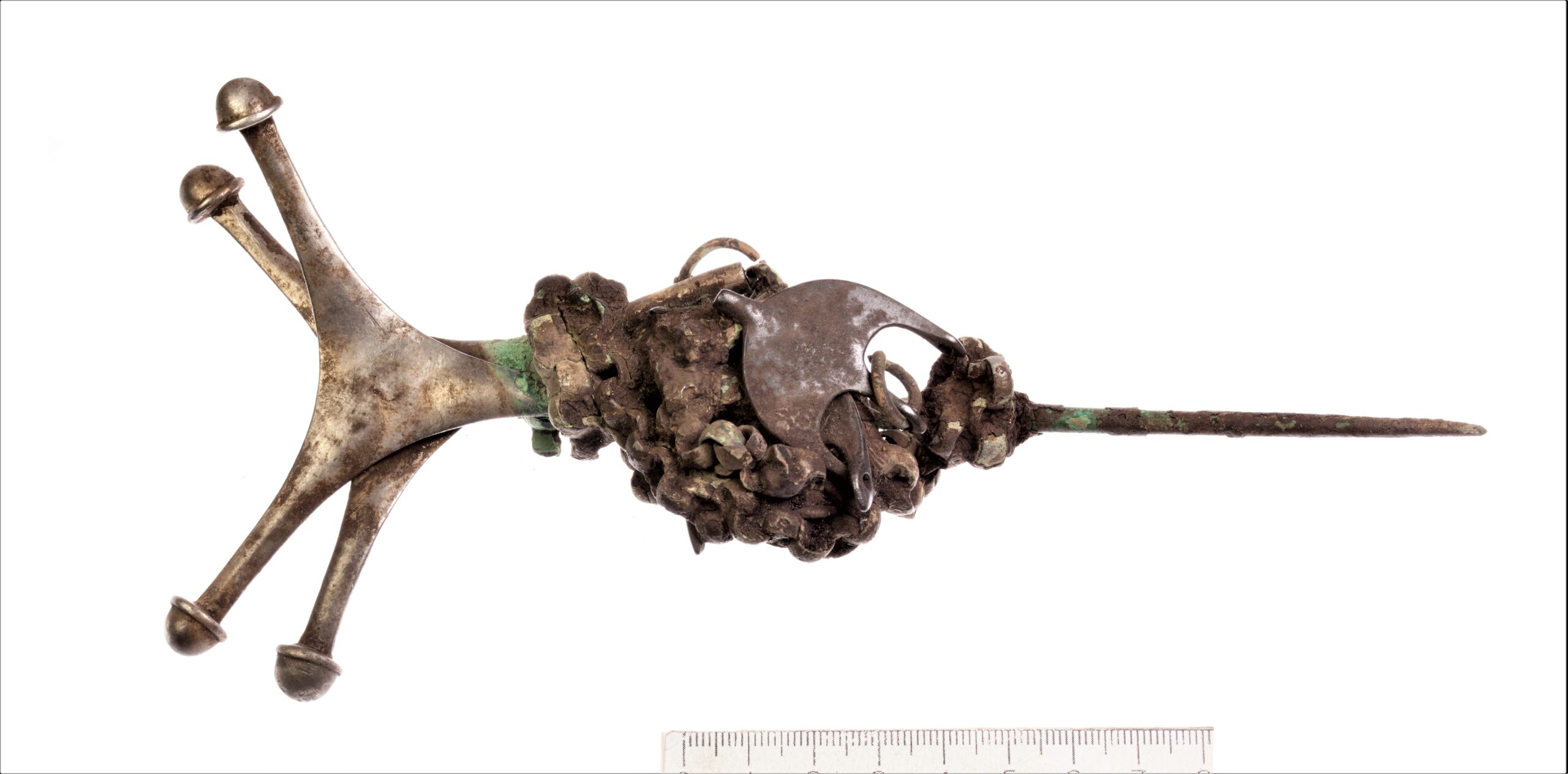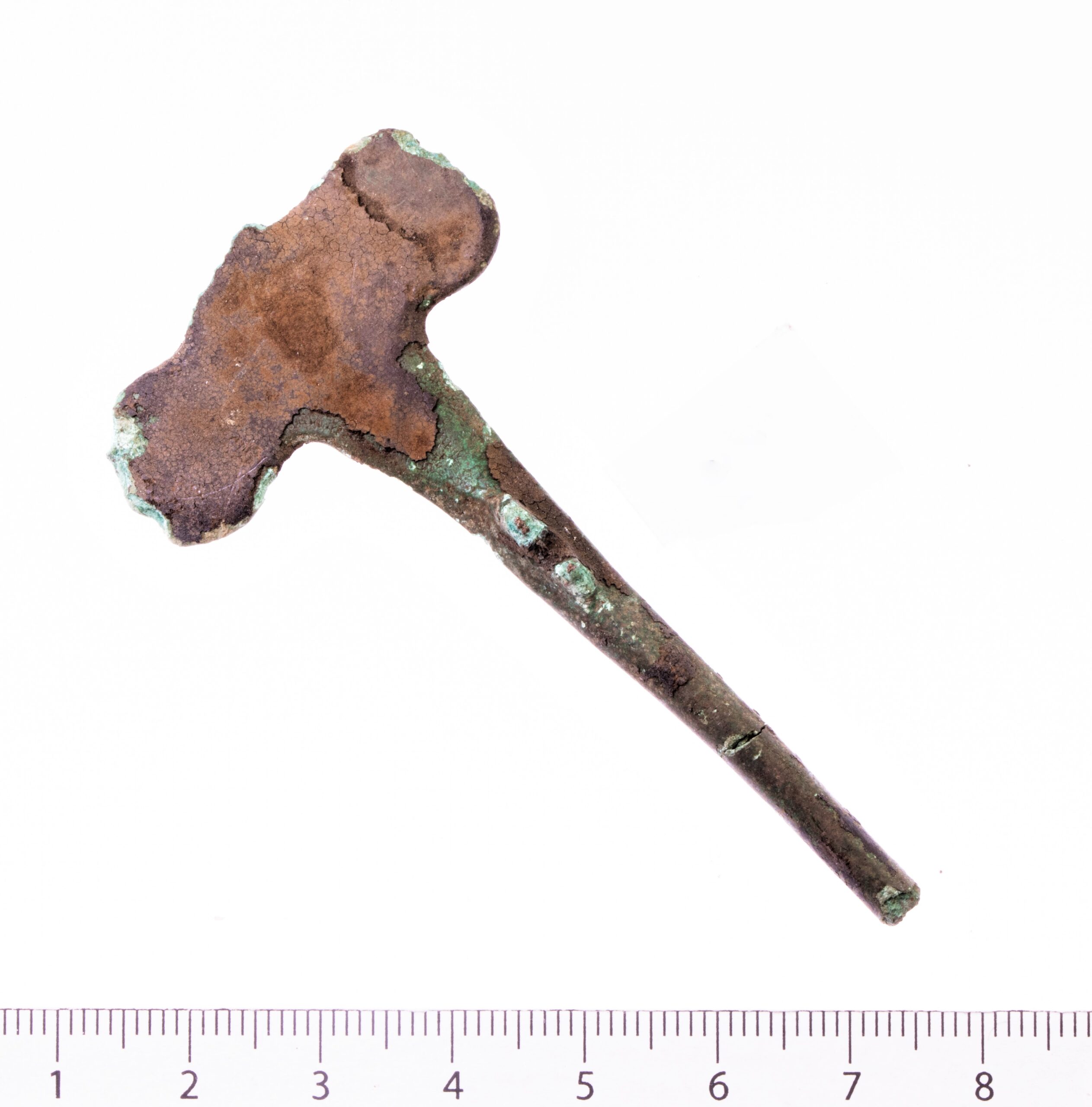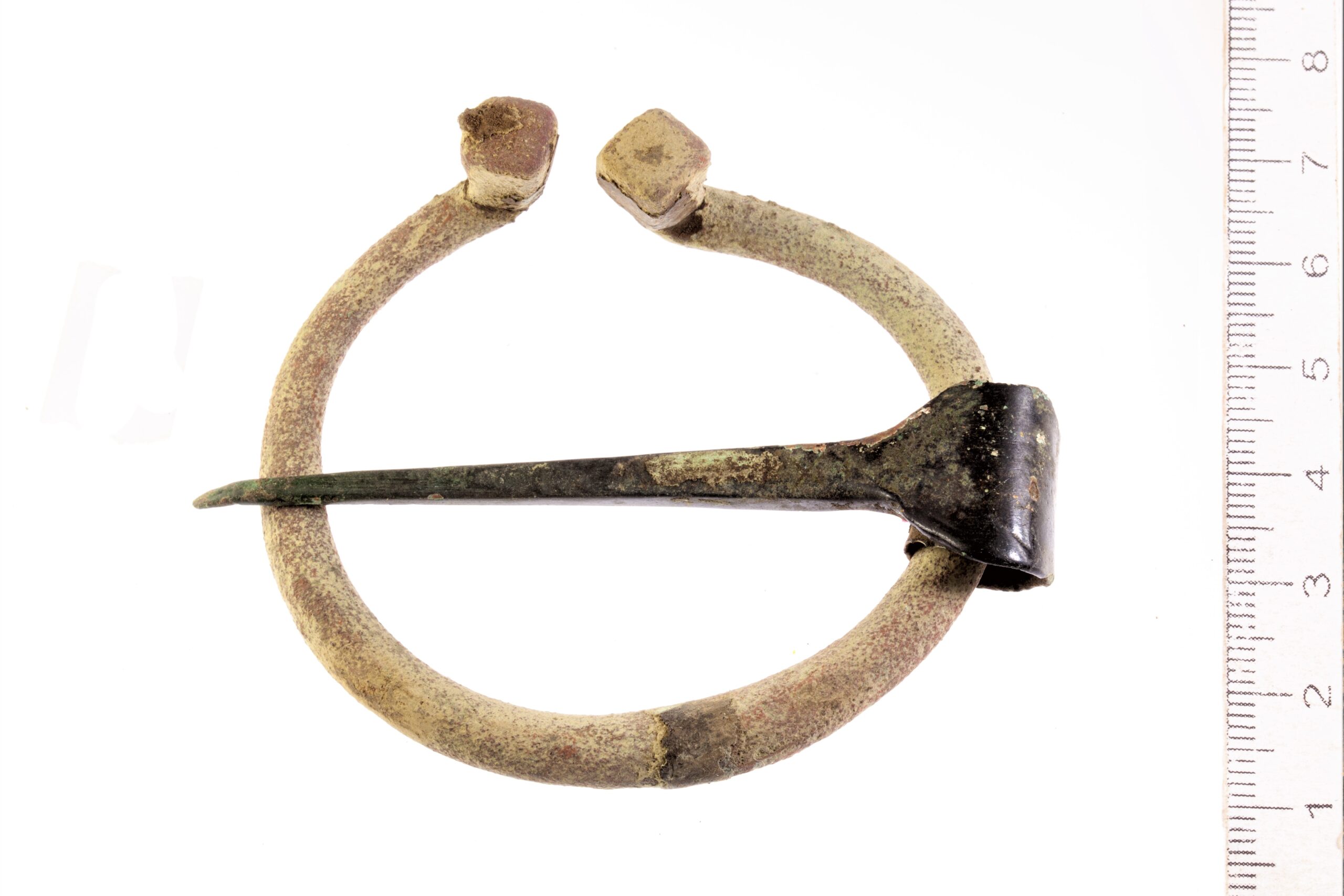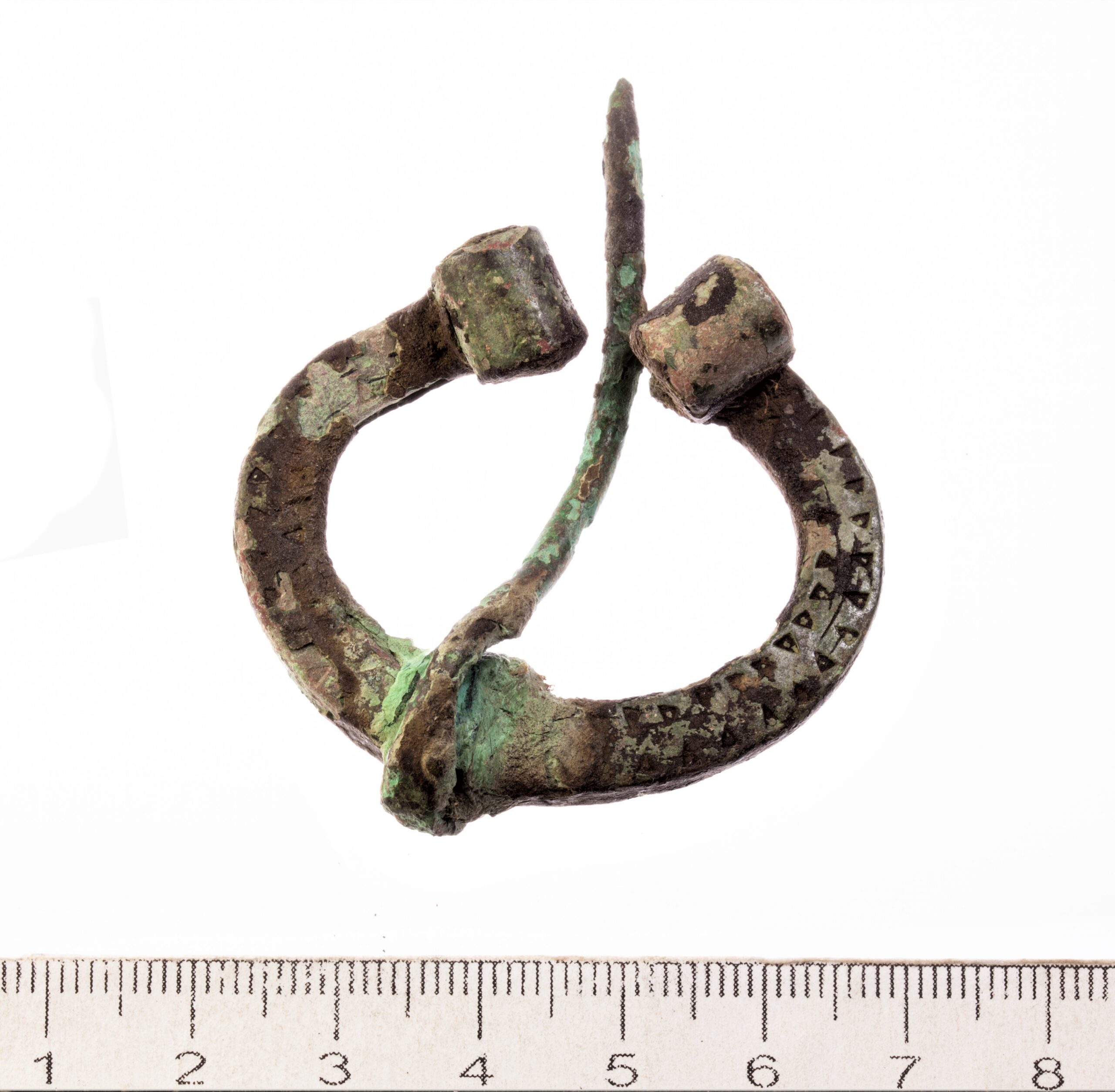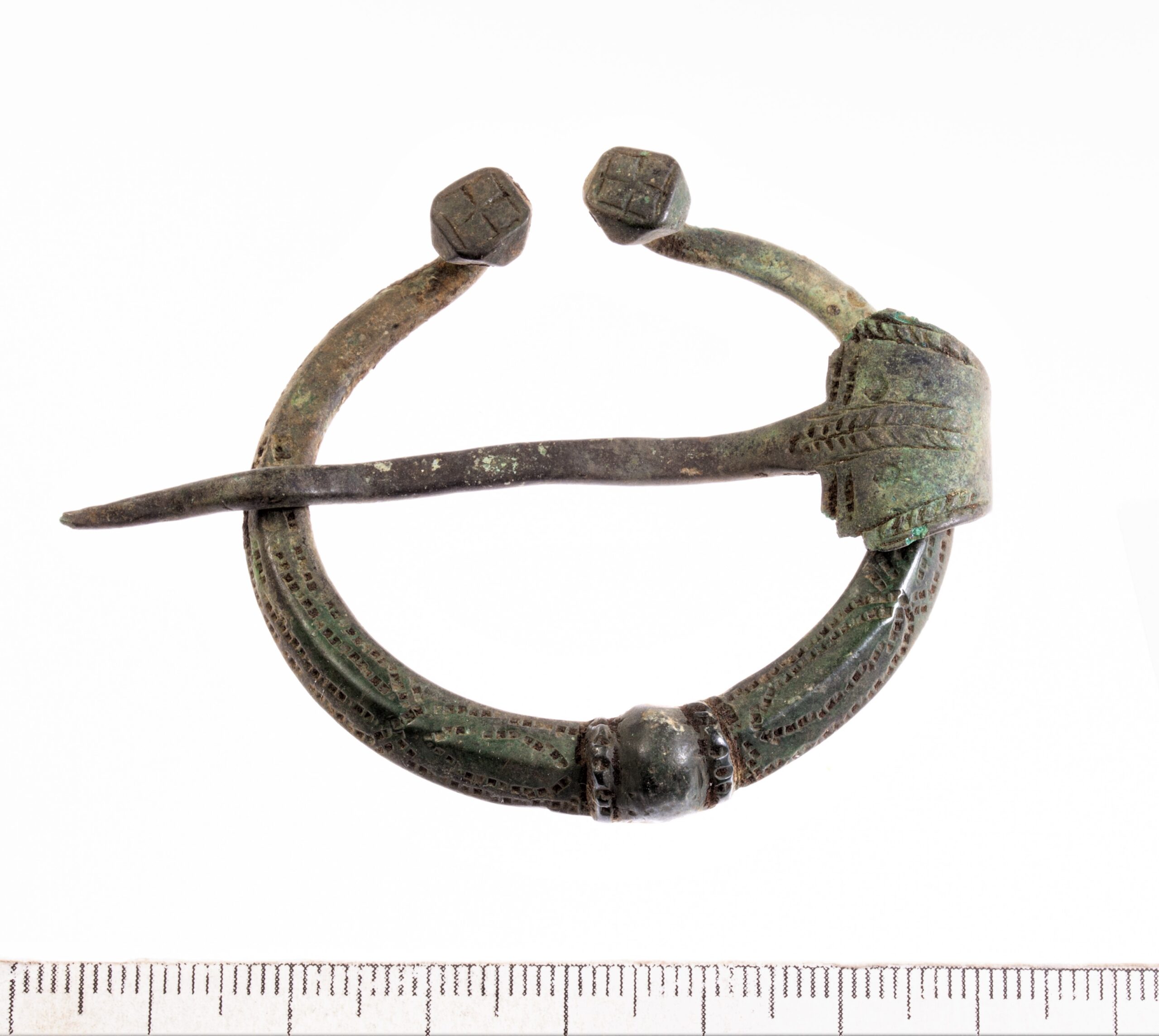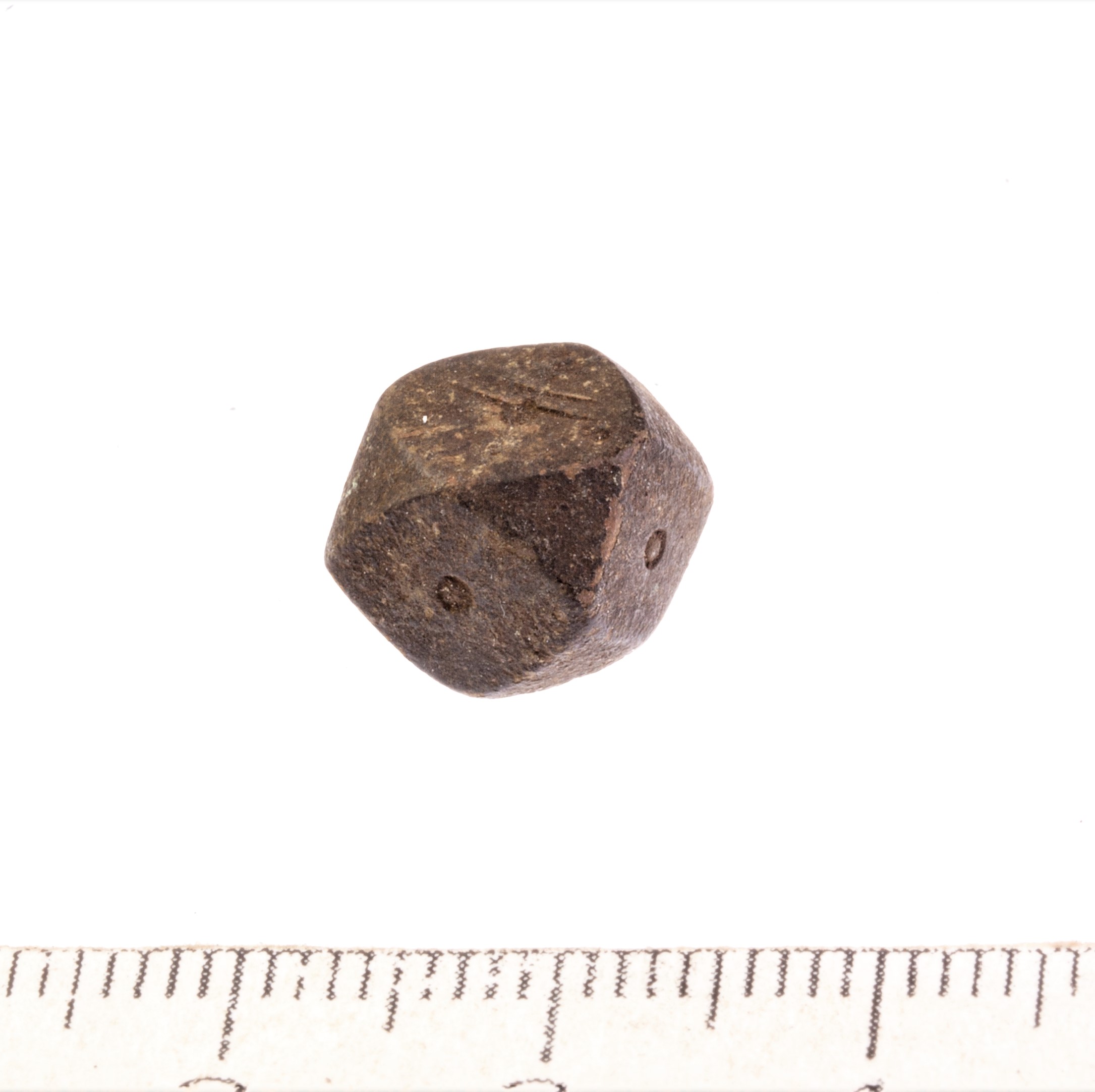Database
Our database is free to use for all history and archaeology enthusiasts. If you use our database, please do not forget to cite correctly:
Mägi, Marika; Palm, Piia Sandra. Archaeological Artefacts of Saaremaa. Foundation Osiliana / Tallinn University. Accessed: date.
The Osiliana Archaeological Database presents artefacts from Saaremaa and the surrounding small islands.
The database contains mainly Iron Age and Medieval finds that can be classified.
Undated metal or other pieces were generally excluded from the database.
Ceramics are represented by isolated examples.
The database is a work in progress and is constantly being updated.
Mullutu
Bronze ring-headed dress pin. A similar pin was e g in Keila deposit find. The pin type was widespread in coastal Estonia, coastal Finland and coastal Latvia.
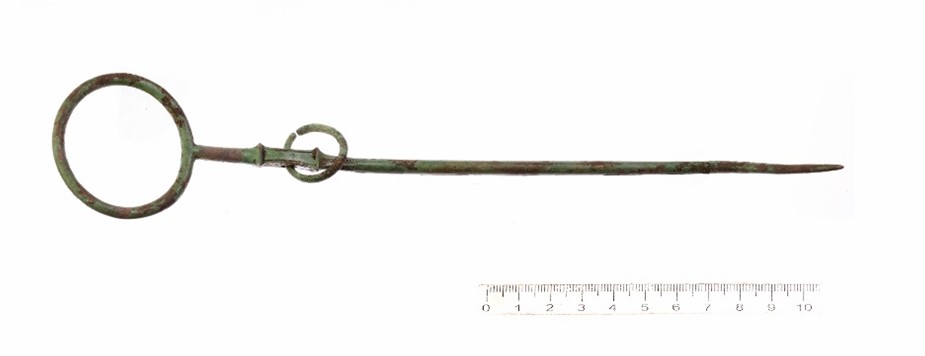


First photo: Jaana Ratas.
Ring-headed dress pin, bronze. A similar pin was e g in Keila deposit find. The pin type was widespread in coastal Estonia, coastal Finland and coastal Latvia.
Literature:
Mägi, M. 1997. Eesti merovingi- ja viikingiaegsed rinnanõelad – võõrapärased ja omad. – Estonian Journal of Archaeology 1, 26−83. Read the article (ENG p. 58-73): here.
Mullutu
Triangel-headed dress pins, 2, with two semi-oval chain holders and chain arrangement wrapped around the pins. The heads of the pins are made of silver and decorated with Animal-style ornament. mushroom-shaped knobs. Other parts of bronze.
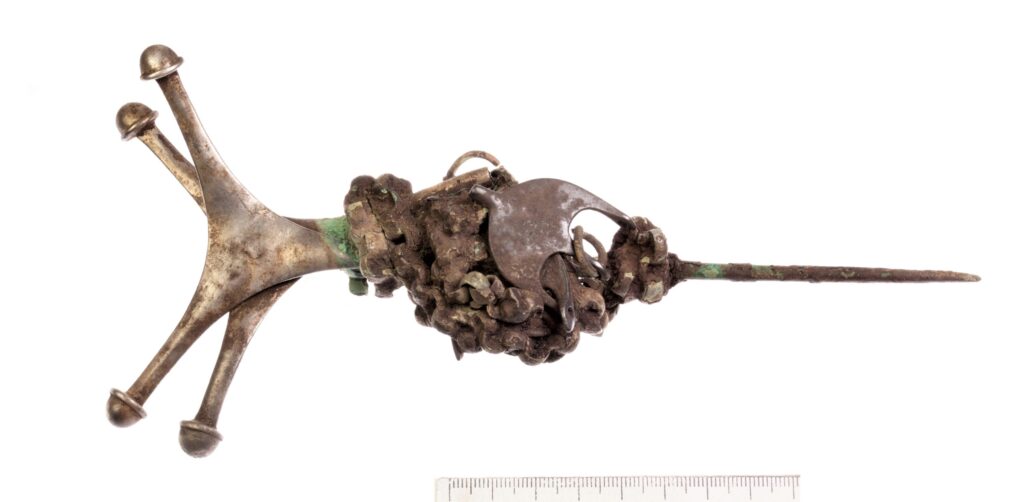
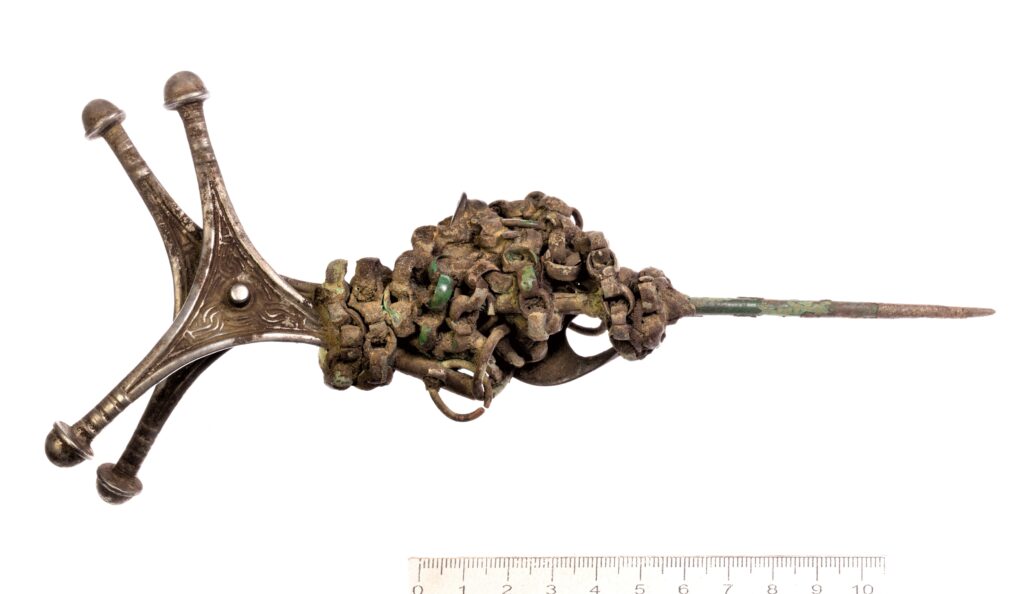
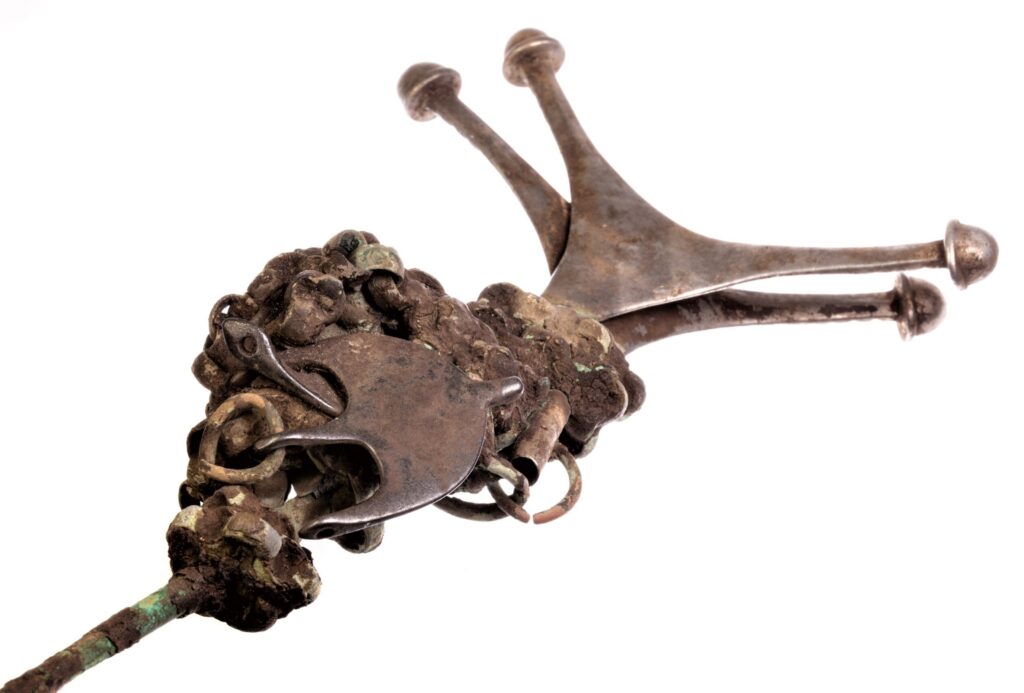
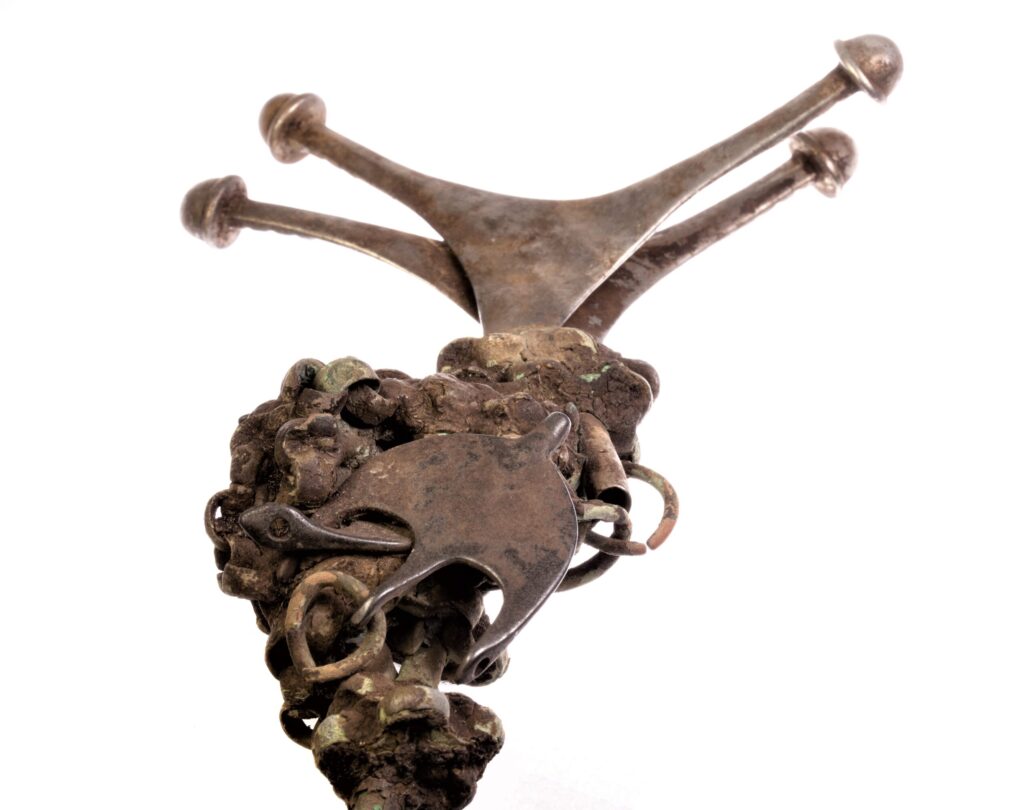
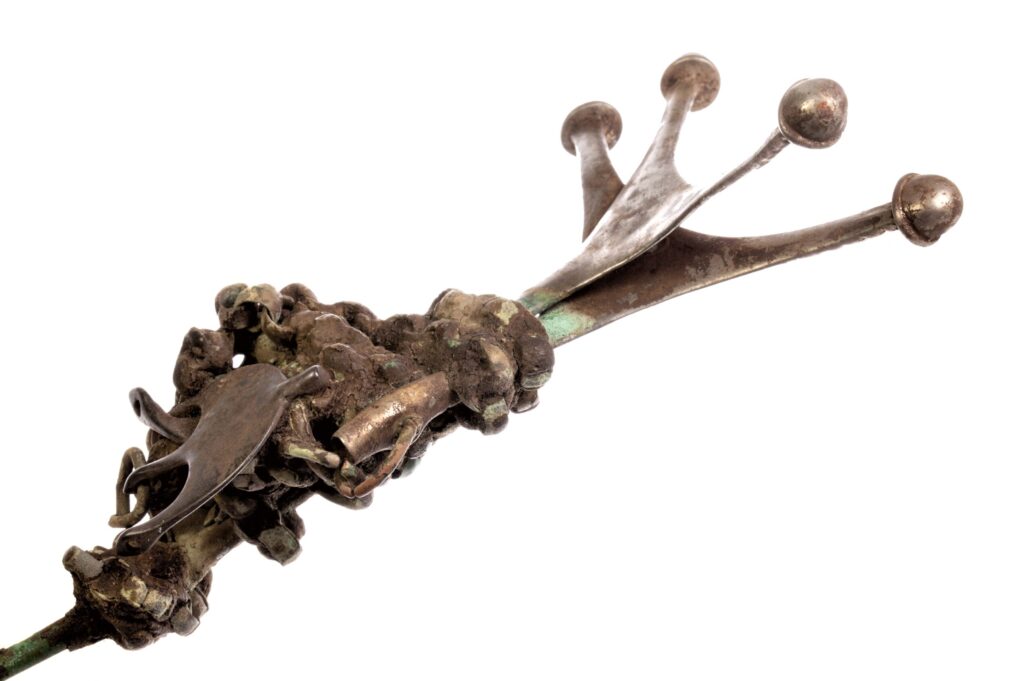
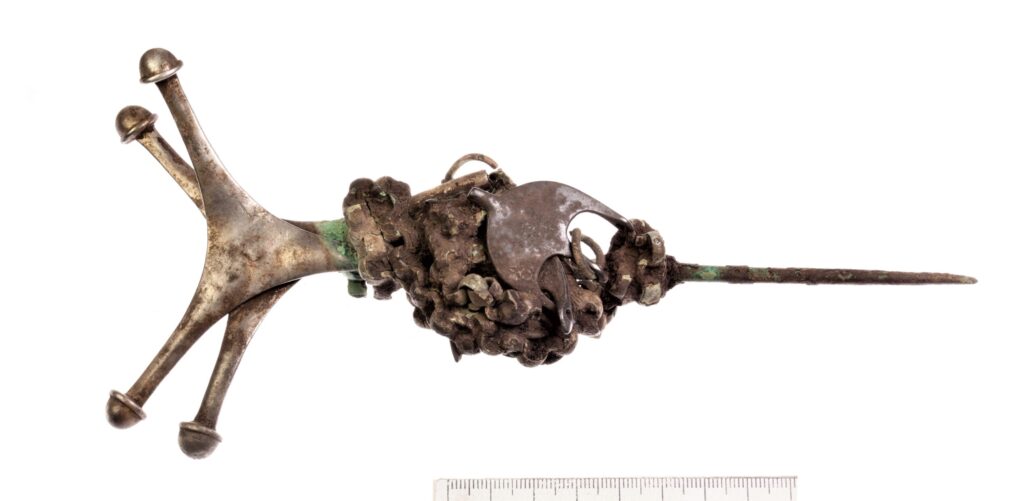
Photos: Jaana Ratas.
Triangel-headed dress pins, 2, with two semi-oval chain holders and chain arrangement wrapped around the pins. The heads of the pins are made of silver and decorated with Animal-style ornament. mushroom-shaped knobs. Other parts of bronze.
Literature:
Mägi, M. 1997. Eesti merovingi- ja viikingiaegsed rinnanõelad – võõrapärased ja omad. – Estonian Journal of Archaeology 1, 26−83. Read the article (ENG p. 58-73): here.
Jets, I., Mägi, M. 2015. Local shape, foreign decoration. Shared cultural values in dress pins from the Viidumäe sacrificial site on Saaremaa. – Fornvännen. Journal of Swedish antiquarian research, 110 (4), 257−266. Read the article: here.
Mullutu
Fragment of a bronze ring-headed pin with a cross-shaped extension.
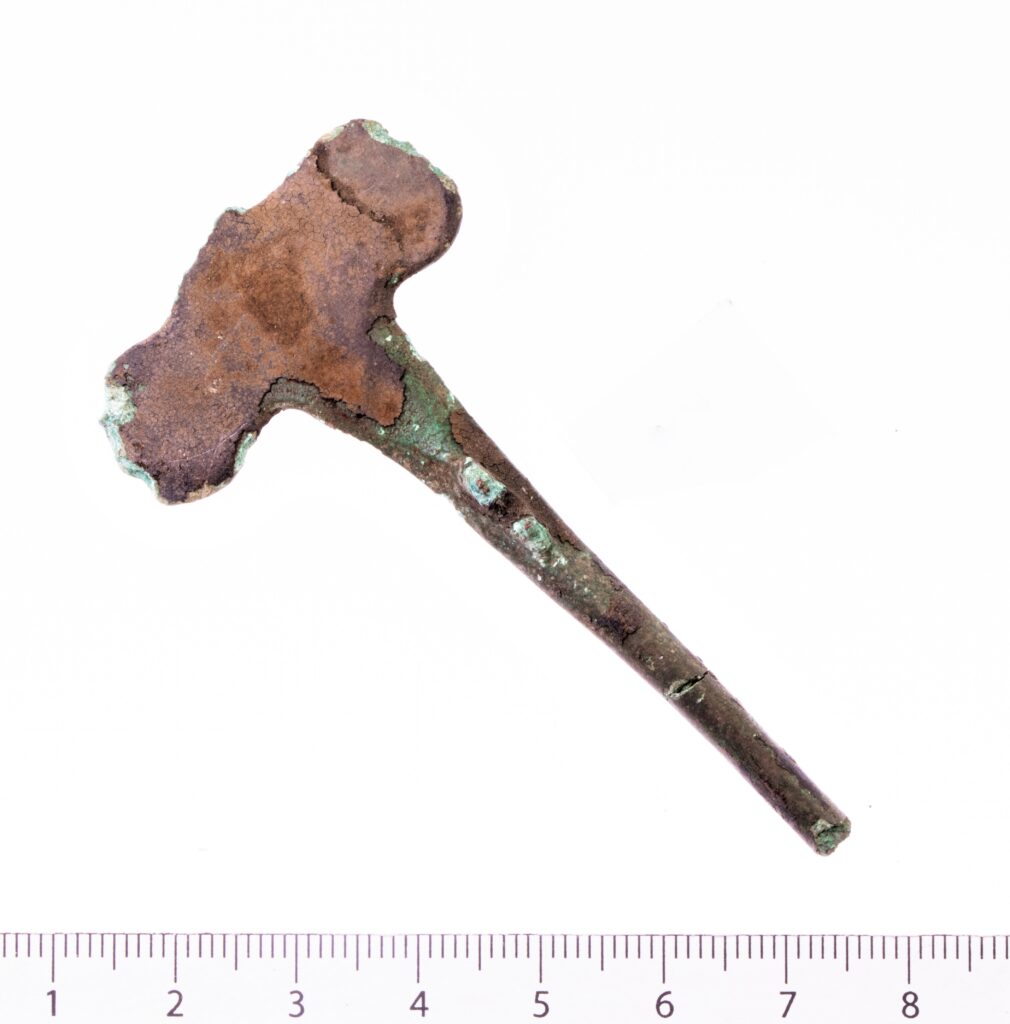
Photo: Jaana Ratas.
Fragment of a ring-headed pin with a cross-shaped extension, bronze.
Literature:
Mägi, M. 1997. Eesti merovingi- ja viikingiaegsed rinnanõelad – võõrapärased ja omad. – Estonian Journal of Archaeology 1, 26−83. Read the article (ENG p. 58-73): here.
Mullutu
Tanged arrow-head, iron. The blade cross-cut is shaped as a rhomb with four pointed ends, the cross-cut of the neck is rectangular. Analogues are known e g from Hedeby, Germany.
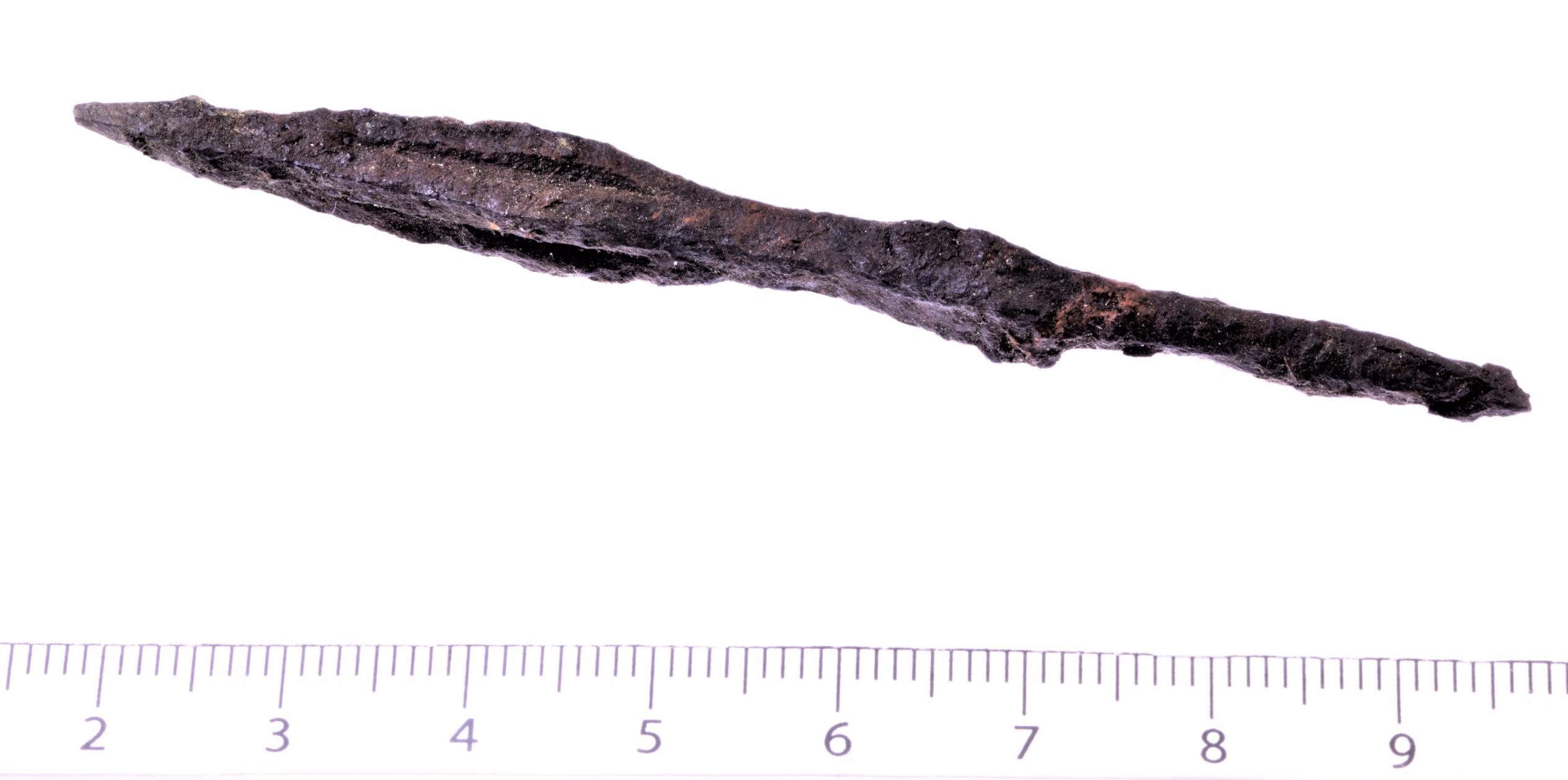 Photo: Jaana Ratas.
Photo: Jaana Ratas.
Tanged arrow-head, iron. The blade’s cross-cut is shaped as a rhomb with four pointed ends, the cross-cut of the neck is rectangular. Analogues are known e g from Hedeby, Germany.
Literature:
Schiezel, K. 2014. Spurensuche Haithabu. Dokumentation und Chronik 1963-2013. Schleswig, Wachholtz, 569.
Mullutu
Penannular brooch with widening knob-shaped terminals, copper alloy.Similar ones have been found e g at Pöide and Valjala hill-forts, Karja and Valjala early Christian graveyards, and in the earliest layers of medieval Tallinn.
 Foto: Jaana Ratas.
Foto: Jaana Ratas.
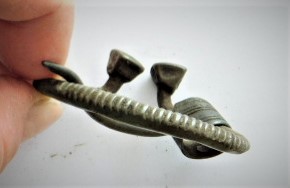
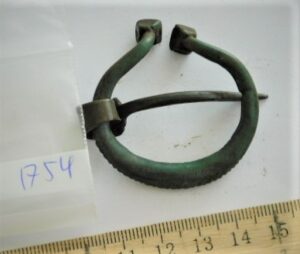
Penannular brooch with widening knob-shaped terminals, copper alloy. Similar ones have been found e g at Pöide and Valjala hill-forts, Karja and Valjala early Christian graveyards, and in the earliest layers of medieval Tallinn. Similar brooches are often found in 13th-14th-century inhumation graves and only seldom in stone graves with cremations. In Karja, such brooch was registered in an inhumation dated to the second half of the 13th century (Mägi 2002, Pl. 125: 1–2), but in Siksälä, South-East Estonia, they also occur in 14th-century graves (Valk et al 2014).
Literature
Mägi, M. 2002. At the Crossroads of Space and Time. Graves, Changing Society and Ideology on Saaremaa (Ösel), 9th–13th centuries AD. Tallinn: Ajaloo Instituut, Tallinn/Center of Baltic Studies, Gotland.
Valk, H., Ratas, J., Laul, S. 2014. Siksälä kalme II. Matuste ja leidude kataloog. Tartu Ülikool: Tartu.
Mullutu
Penannular brooch with widening knob-shaped terminals, copper alloy. The cross-section of the ring is rounded rhomb, the base of the pin is wide. Pin decorated with lines and dots.

First photo: Jaana Ratas.
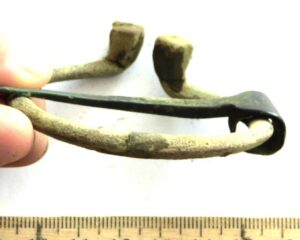
Penannular brooch with widening knob-shaped terminals, copper alloy. The cross-section of the ring is rounded rhomb, the base of the pin is wide. Pin decorated with lines and dots. Such brooches have been found in stone graves with cremations, where they can belong to the late 12th century. They are more widespread in inhumation graves or found as stray-finds. In Siksälä Cemetery, SE-Estonia, such brooches are dated, depending on the shape of the ring and pin, to the 13th-15th centuries (Valk & Laul 2014, 102-103).
Valk, H. & Laul, S. 2014. Siksälä kalme I: Muistis ja Ajalugu. Tartu ülikool, Ajaloo ja arheoloogia instituut, Tallinn.
Mullutu
Penannular brooch with rolled terminals and flat rectangular cross-section of the ring, copper alloy.
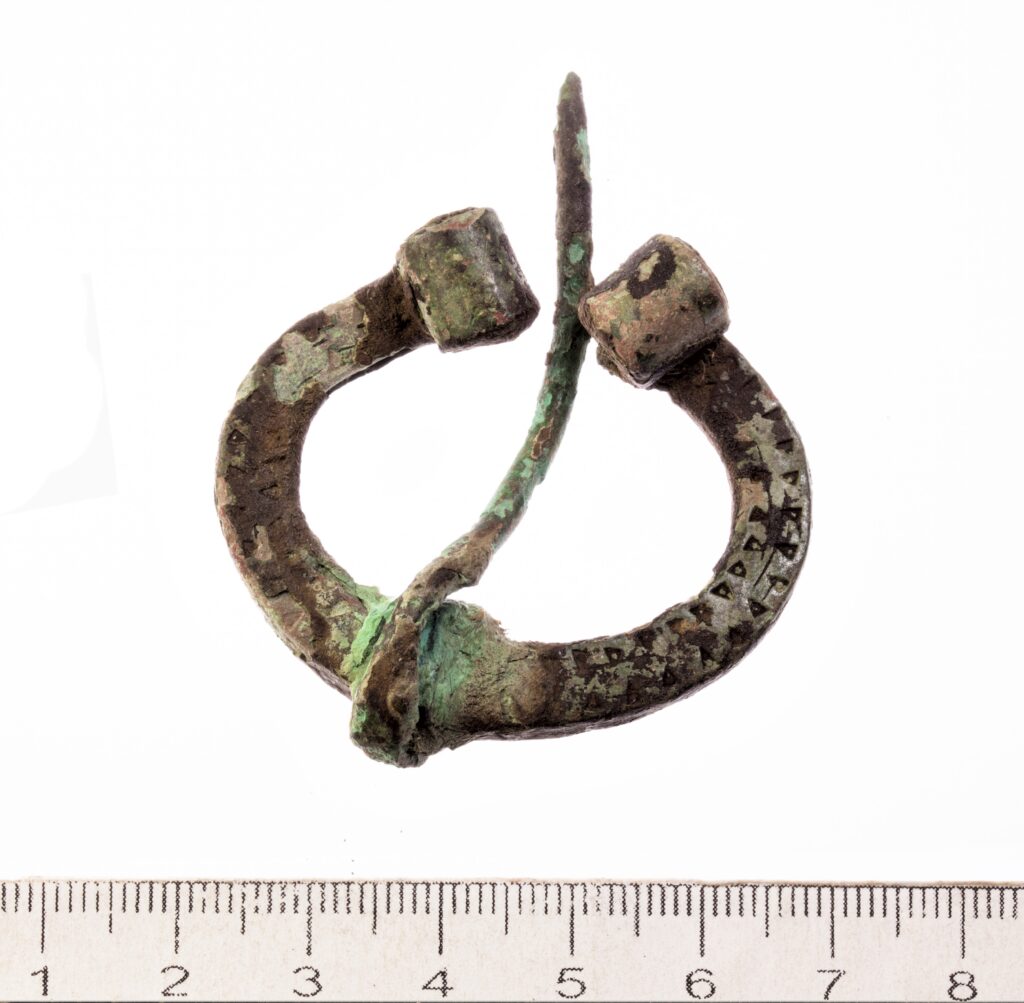
Photo: Jaana Ratas.
Penannular brooch with rolled terminals and flat rectangular cross-section of the ring, copper alloy. Similar brooches have been found e.g. the Karja cemetery in Saaremaa. A similar one has been found in När, Gotland (SHM 15022).
Literature:
Mägi, M. 2002. At the Crossroads of Space and Time. Graves, Changing Society and Ideology on Saaremaa (Ösel), 9th–13th centuries AD. Tallinn: Ajaloo Instituut, Tallinn/Center of Baltic Studies, Gotland. Read the book: here. Look at the drawings of the archaeological excavations: here.
Thunmark-Nylén, L. 1998. Die Wikingerzeit Gotlands, II. Typentafeln. Stockholm.
Mullutu
Penannular brooch with faceted terminals and with a simple three-part gnarl, copper alloy.

Photo: Jaana Ratas.
Penannular brooch with faceted terminals and with a simple three-part gnarl, copper alloy. Such brooches are in Estonia dated predominantly to the first half of the 13th century (Pauts 1997).
Literature:
Pauts, H. 1997. Pahaga hoburaudsõled Eestis. (Töid ajaloo alalt, I.) Eesti Ajaloomuuseum, Tallinn, 79-115.
Mullutu
Octagonal weight of bronze. Facets decorated with “eyes”.
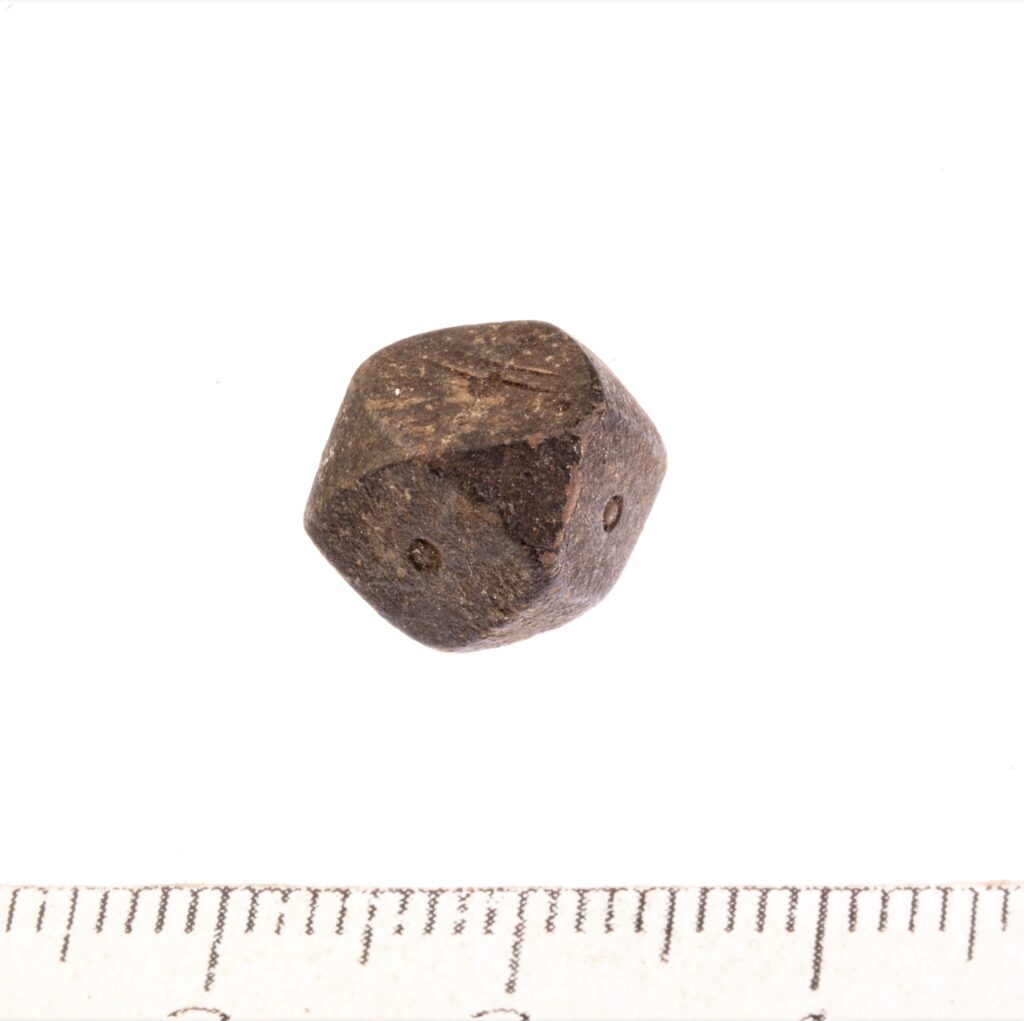
Photo: Jaana Ratas.
Octagonal weight of bronze. Facets decorated with “eyes”. Such weights can mainly be dated to 850-1000 AD.
Literature:
Gustin, I. 2004. Mellan gåva och marknad. Handel, tillit och materiell Kultur under vikingatid. – Lund Studies in Medieval Archaeology, 34. Malmö, Almqvist & Wiksell, 100-107.
The negative value refers to time Before Christ.

